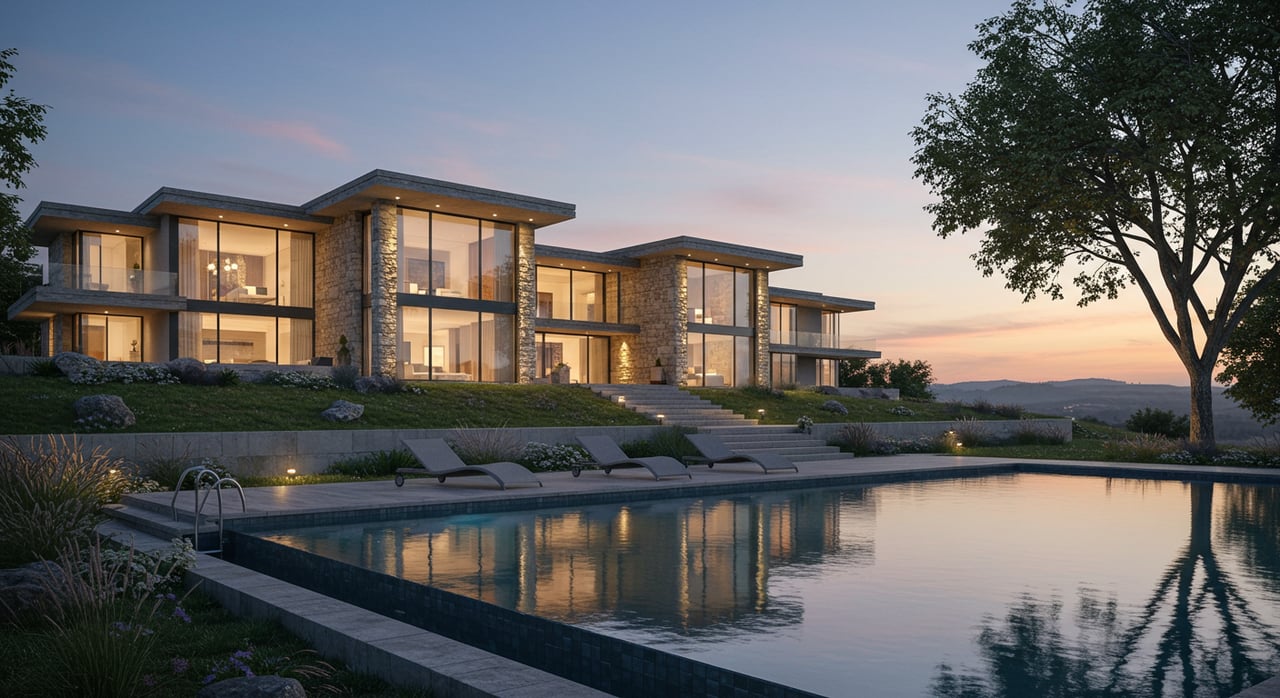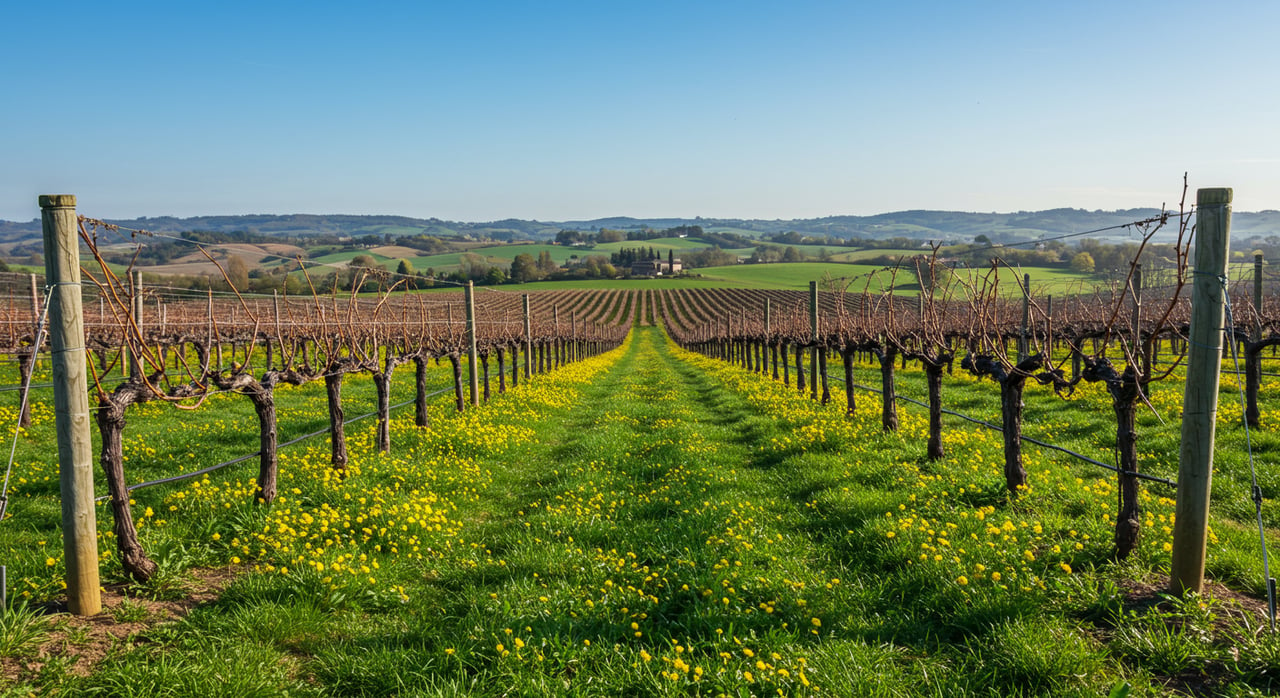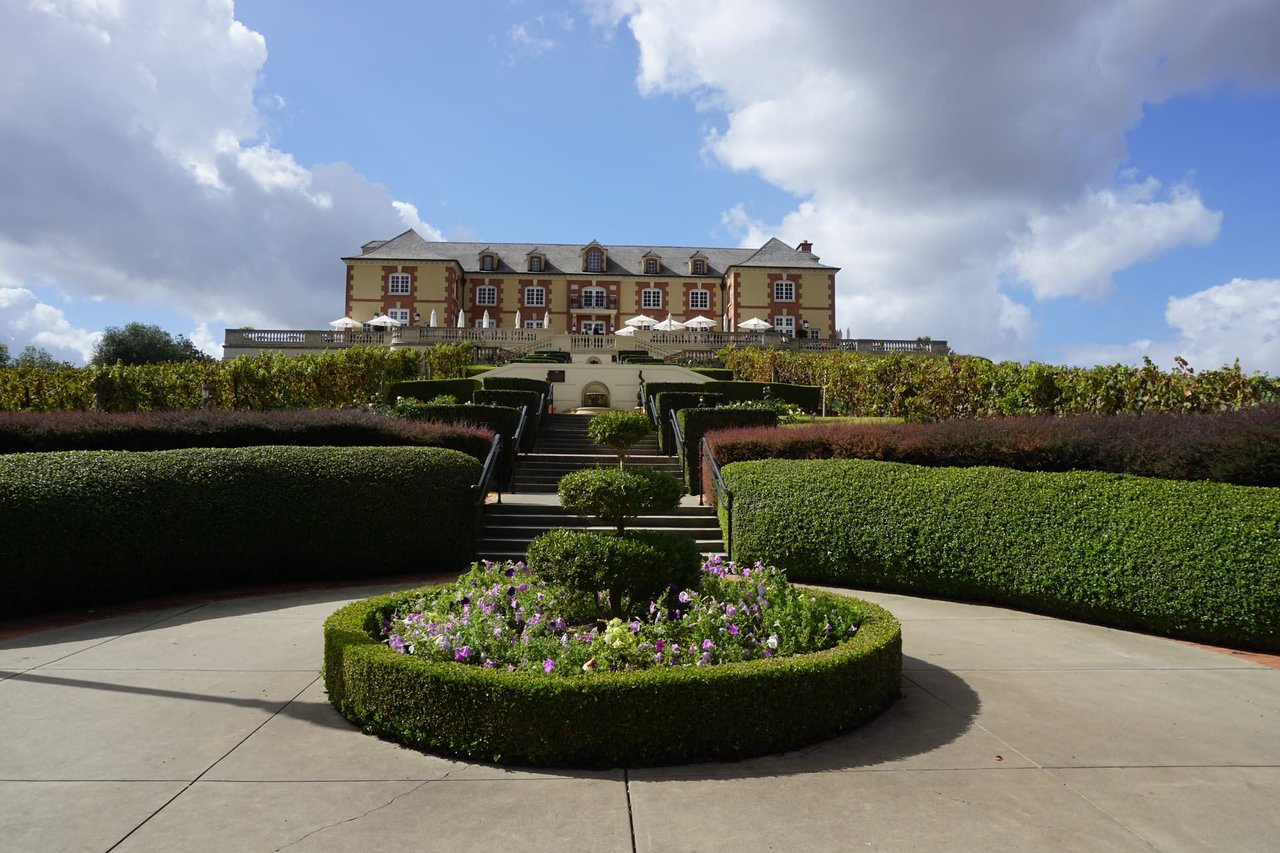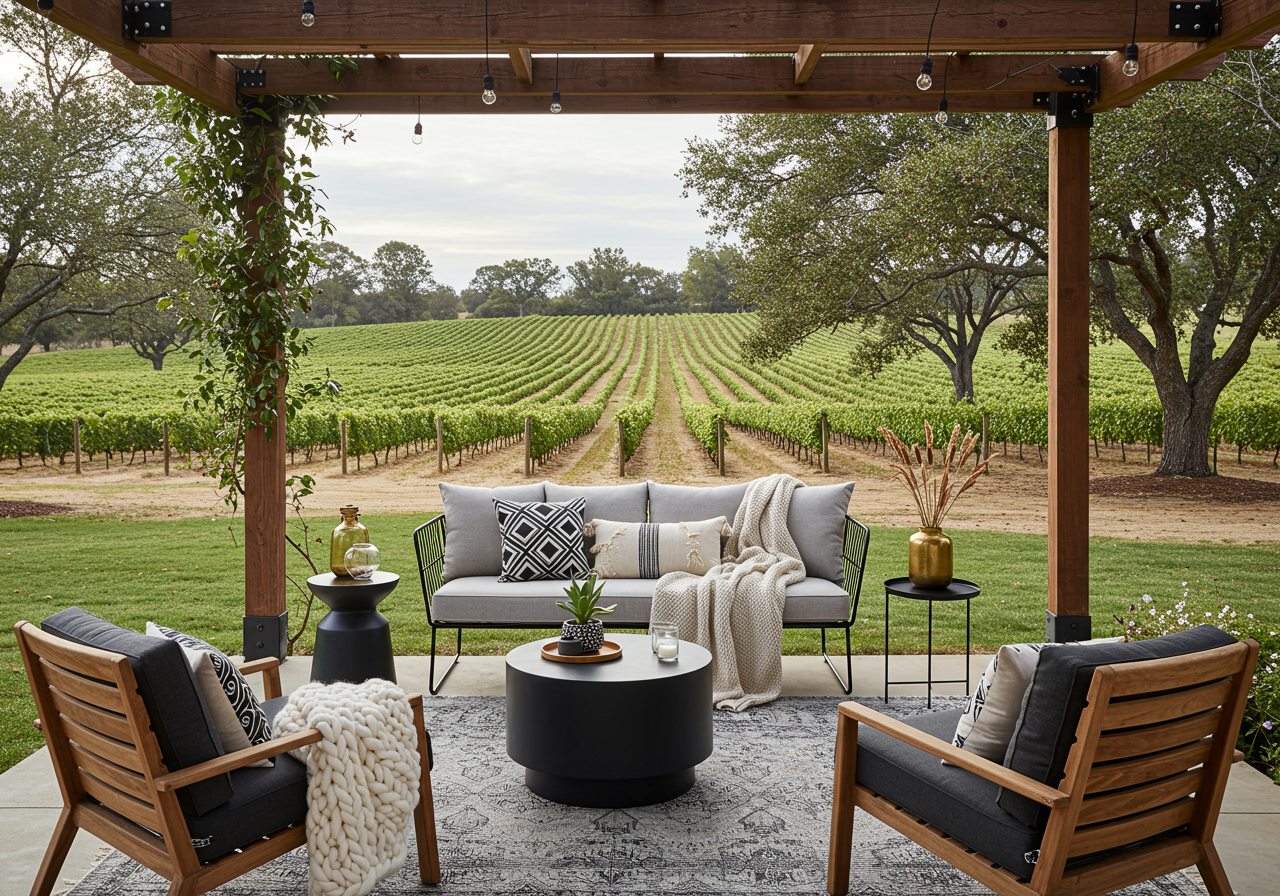
Theorem Vineyards
It’s no secret that Northern California wine country has had a hard time of it lately—what with devastating fires, even before (and during) the disastrous pandemic, a very long, hard time of it. Wineries could welcome no visitors. Tasting room staffs pivoted (a word long overdue for retirement) to Zoom tastings, shipping bottles and beaming commentary right into our living rooms. As creative and cozy as that has been, though, it doesn’t match the pleasure of sipping on a winery terrace in Napa’s eastern hills, say, with the valley sweeping to the west below.
Behind the scenes—the counter-narrative to smoke and Covid closures—some spectacular new wineries and tasting rooms have been in the works: a down-to-the-walls refresh on Pritchard Hill; a historic barn re-build in Yountville; a grand, ground-up vision replacing a fire casualty on the benchlands of the Vaca Range. A whiplash of openings and closures through last year kept these wineries from throwing open their doors. But the coast is clear now. Napa Valley is definitely open for business, and never has there been a wider range of splendid places to settle in and taste some of the world’s finest wines.
Behind the scenes—the counter-narrative to smoke and Covid closures—some spectacular new wineries and tasting rooms have been in the works: a down-to-the-walls refresh on Pritchard Hill; a historic barn re-build in Yountville; a grand, ground-up vision replacing a fire casualty on the benchlands of the Vaca Range. A whiplash of openings and closures through last year kept these wineries from throwing open their doors. But the coast is clear now. Napa Valley is definitely open for business, and never has there been a wider range of splendid places to settle in and taste some of the world’s finest wines.
Here are the best, from very recent visits. All are open (mostly) by appointment, and in some cases primarily to members (or prospective members). Do check before you go. But go soon.
Brand Napa Valley

Brand Napa Valley
Adam Potts
Adam Potts
Perched high on Pritchard Hill, its upper vineyard nosing up to Colgin’s, Brand Napa Valley has always had a remarkable address. Now, though, the estate’s new owners, Christine O’Sullivan and Jim Bean, former Apple execs, have transformed the visitor center and cave into one of the most exciting places to taste in the valley.
Inviting swings hanging on a wraparound porch—cozy and industrial at once—are the understated intro here, but step inside and you’re in Instagram heaven, from the faux fur chair by the door to the cleverly designed independent tasting spaces in the grand room. And while you might think that the priority here is on the place, you’d be only half right. The focus is in the vineyards, where O’Sullivan and Bean have been working with longtime director of winemaking Philippe Melka and onsite winemaker Matt Johnson to nudge the three estate wines into even better versions of their already reputable selves. The three wines step up the hill, starting with a Cabernet Sauvignon from Vineyard N°95, below the winery (95 being their street address)—the 2017 expressive and approachable, with lush plum and blackberry set off by savory layers of sage and minerality. The Brand Proprietary Blend (2018 is the current release) is an elegant expression of Cabernet Franc (with some Cab Sauv blended in), perfumed with crushed rock, violets, and spicy red fruit, with a dense but supple structure. And finally, the flagship Cabernet Sauvignon, from the highest vineyard, at 1,400 feet (smaller plants, fewer shoots, smaller berries), is powerfully structured and complex but opulent, with gorgeous black fruit unfolding with mocha, hints of licorice, and forest. Open by appointment.
Brion
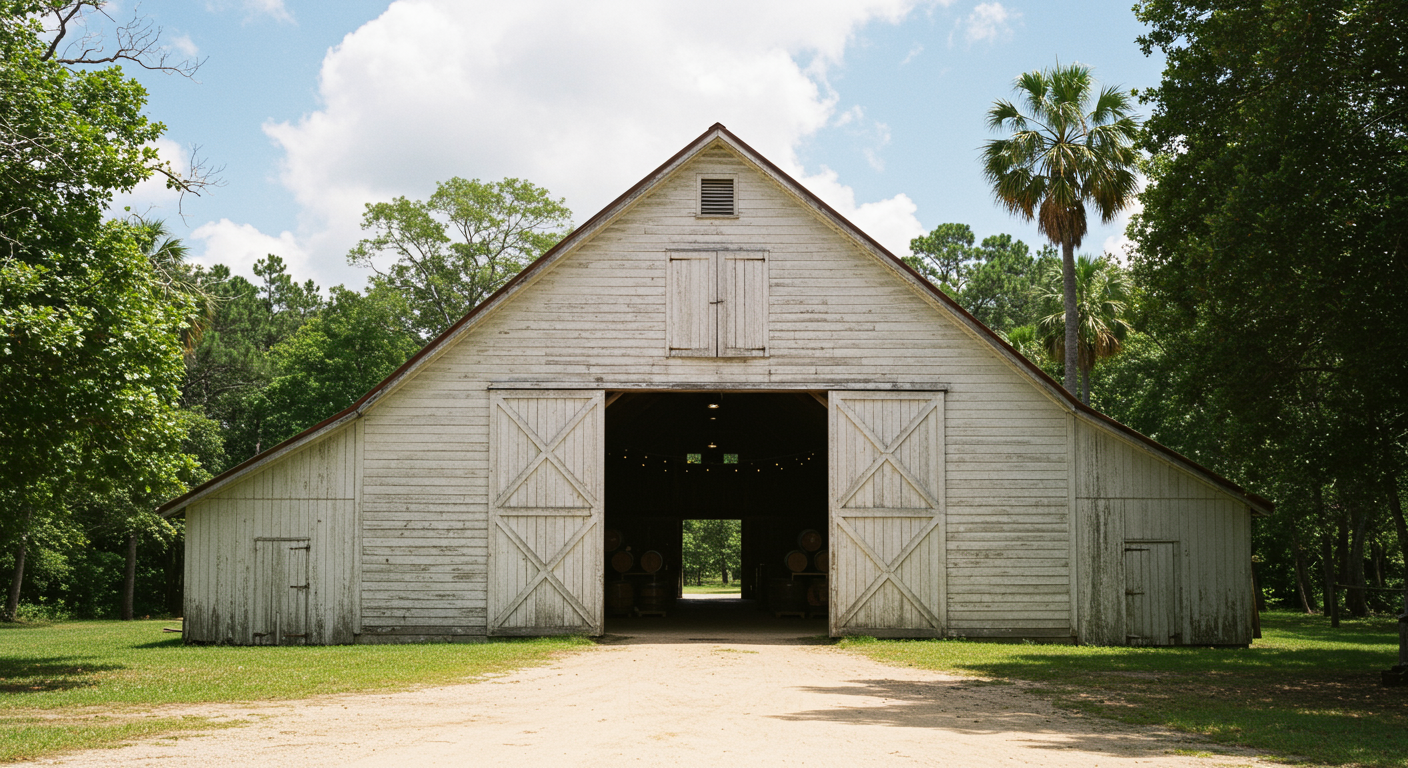
Brion Wines
Photo: Olaf Beckmann
Photo: Olaf Beckmann
If you manage to find Brion (there’s no sign) and pull up in front of the new winery and tasting room, you’d be forgiven for thinking it’s just an old barn. It is—one of Napa Valley’s oldest, a “bank barn” affair built into the hill, with drive-up access in back to the upper floor—and it looks the part. That’s no accident. Founder Brion Wise, who also has B. Wise Vineyards in Sonoma, made like the renaissance man that he is and painstakingly preserved the rambling historic exterior while transforming the interior into the smartest of tank and barrel spaces, shored up and girded with a great deal of steel and concrete.
Rustic origins aside, the real treat here is the lineup you’ll taste of single-vineyard Cabernet Sauvignons that is the focus of Brion Wines. Wise is working with three different winemakers, each of whom is uniquely familiar with one or more of four coveted vineyard sites currently represented in the lineup. In a recent flight, a 2015 Cabernet from Moon Mountain District (the Wises’ Sonoma property), made by Massimo Monticelli, was a concentrated and aromatic beauty, with black cherry layered on complexities of minerality and earth. A 2016 Cab from Caldwell Vineyard in Coombsville (a cool region in every sense of the word), made by Julien Fayard, was darker, a little more brooding, with tobacco and dried herbs acting as foil to black and blueberry fruit, vibrant with structure and acidity. A 2014 Sleeping Lady Cabernet (with Monticelli in charge again) packed dark berry fruit, exotic spices, and hints of garrigue (that French word for wild herbs in the underbrush) into a tight structure. And a 2017 Oakville Ranch, in the hands of Mark Herold, is inky and savory with minerals, crushed rock, and mountain herbs—bold and concentrated with berry liqueur (Herold favors later picking) and blockbuster structure. One leaves with the question: Nature or nurture? Open by appointment.
Elusa
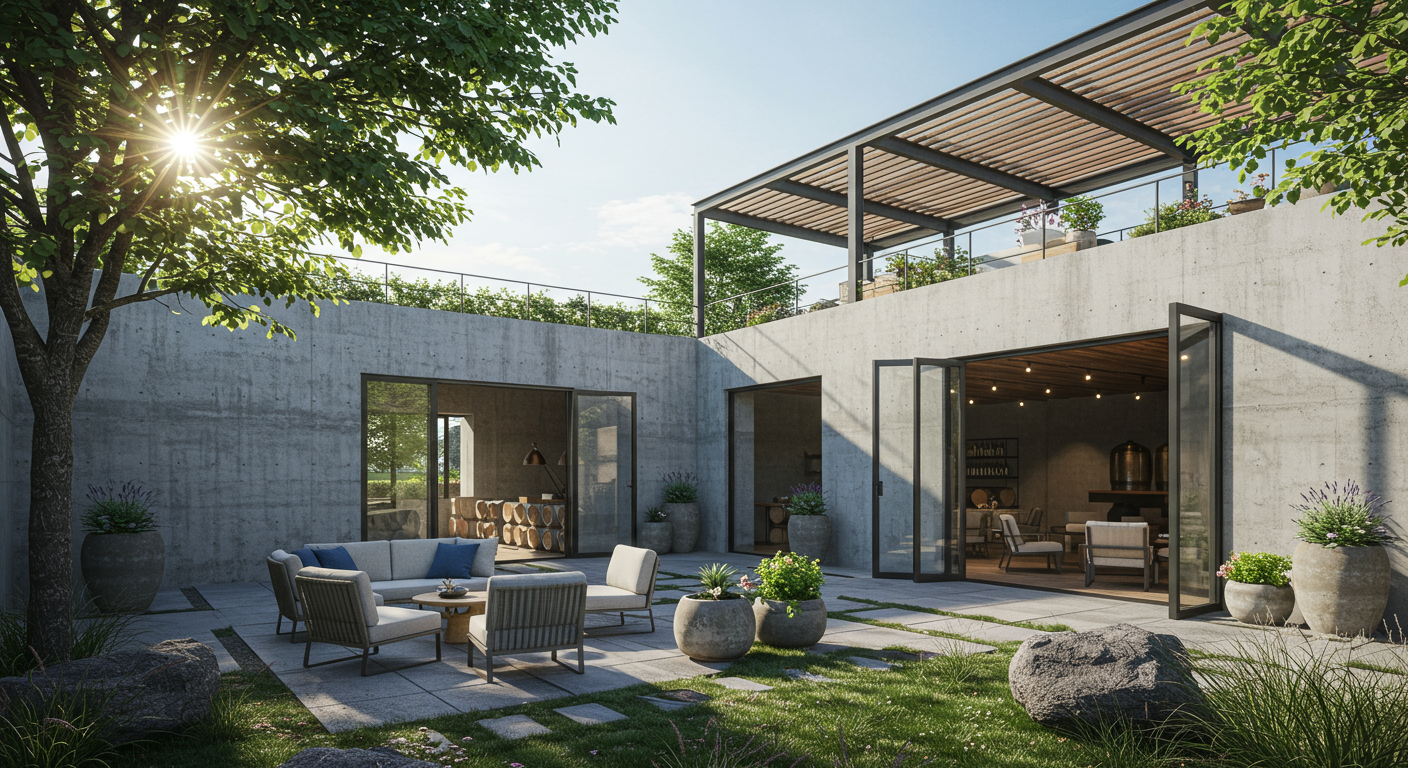
The courtyard and rooftop at Elusa Winery
Kim Carroll
Kim Carroll
The best new place to taste in Calistoga? It’s in the north valley’s best new place to stay: the Four Seasons Resort and Residences Napa Valley. Renowned winemaker Thomas Rivers Brown has long planned the complex to be home to his personal brand Elusa, and has been working with the estate vineyard tucked among the luxury bungalows since 2013. What with the setbacks of fire and pandemic, though, the artful, light-filled tasting room, with its rustic white walls and warm wood, is only just now open to hotel guests and visitors alike.
Working with Rivers Brown, winemaker Jonathan Walden (with his own impressive resume, including Atelier Melka and more) is responsible for crafting the brand’s Calistoga-wide and single-vineyard wines here. The lineup is a revelation, if your broad-stroke knowledge of the northern reaches of Napa Valley is simply that it’s warm up here and therefore the reds should be über-ripe fruit and alcohol bombs. In the lounge, you can taste the Elusa current-release 2018 Calistoga Cabernet Sauvignon, deeply fruited, expressive, and generous, with the elegance and power of the AVA. And you can dip back through a few vintages, for a fascinating taste of the evolution of the wine, as its complexities unwind. It’s a rare treat to have access to older vintages of Cabernet Sauvignon in a brand-new winery. But don’t miss the Cabernet Franc from neighboring Kenefick Ranch. Open by appointment (but it’s worth taking a chance on the spur of the moment; there’s a “culture of yes” around here).
Working with Rivers Brown, winemaker Jonathan Walden (with his own impressive resume, including Atelier Melka and more) is responsible for crafting the brand’s Calistoga-wide and single-vineyard wines here. The lineup is a revelation, if your broad-stroke knowledge of the northern reaches of Napa Valley is simply that it’s warm up here and therefore the reds should be über-ripe fruit and alcohol bombs. In the lounge, you can taste the Elusa current-release 2018 Calistoga Cabernet Sauvignon, deeply fruited, expressive, and generous, with the elegance and power of the AVA. And you can dip back through a few vintages, for a fascinating taste of the evolution of the wine, as its complexities unwind. It’s a rare treat to have access to older vintages of Cabernet Sauvignon in a brand-new winery. But don’t miss the Cabernet Franc from neighboring Kenefick Ranch. Open by appointment (but it’s worth taking a chance on the spur of the moment; there’s a “culture of yes” around here).
One Hope

The exterior at Onehope.
ONEHOPE
ONEHOPE
Just when you think Napa Valley’s Highway 29 corridor couldn’t possibly house another new winery, well, there it is—Onehope, just north of Robert Mondavi Winery in Rutherford. The structure, a soaring Howard Backen, high-design barn, houses an impressive tank room; somewhat massive, rustic barrel room; and comfy-sleek tasting spaces, inside and out. But access to Onehope is a bit different than for most wineries here.
In fact, Onehope doesn’t so much sell wine as it does hope itself. The vision of the founding partners, who began with a few cases out of a pickup truck, is to fund worldwide needs through their wines, loosely grouped into four pillars: food, water, health and education. And they’ve set up a couple of ways to get involved. The core of the network is the “20/20 Collective,” a group of 2,000 members who come together every year to identify 20 impactful projects to fund—local, national and global. (Membership guarantees access.) Short of belonging to the 20/20, anyone who is interested can sign on as an “Entrepreneur” to host individual community events wherever they are, and raise funds through sales for a charity of their choice (local school, etc.) To date, Onehope has raised more than $6,000,000, with a goal of more than $10 million by 2025.

The tasting room at One Hope Winery
ONEHOPE
ONEHOPE
If the connection to charity implies more attention to projects than products, resist that impression with Onehope wines. Winemaker Mari Wells Coyle crafts quite an astonishing range, from the Rutherford location as well as other Napa Valley AVAs and beyond—including the Sierra Foothills, where she has considerable experience. A Rutherford Fumé Blanc—creamy, mouth-filling, and brimming with dry citrus, lychee, and peach—pays homage to the inspiration of Robert Mondavi, who “created” fumé blanc right next door. A 2018 Atlas Peak Cabernet Sauvignon layers crushed rock and savory herb notes under bright fruit—blackberry, cassis—and a firm structure. And a 2018 Oakville Cabernet delivers beautiful aromatics, with floral and mineral aromas leading into generous fruit—rich and mature, but with impressive tannins. Onehope actually makes more wines than any other Napa Valley producer, and with half the portfolio garnering 90- to 97-point ratings, there’s no sacrifice in pursuit of hope here. Open by appointment to 20/20 members, with some availability to others as well.
Roy Estate
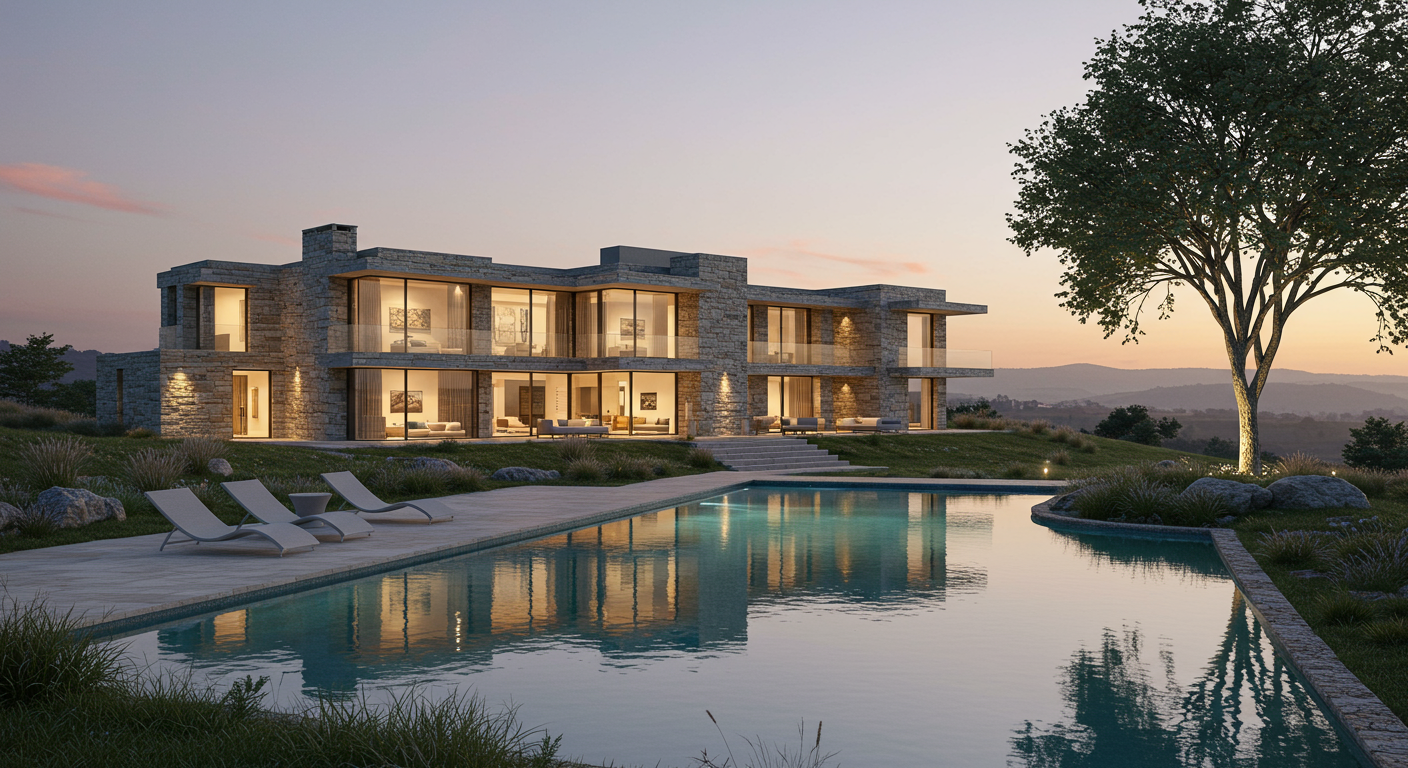
The pool and tasting room at Roy Estate.
Roy Estate
Roy Estate
In 2017, Stephany Maillery and Stephan Crétier had just closed on the Roy Estate property, on the east side of Napa Valley, when a devastating fire raced down the Vaca Range toward their Grand Cru–level vineyards (developed by renowned Helen Turley) and residence. The only things left in the aftermath: the vineyards (which, with inherent moisture, resist flames) and a lone-standing chimney. Maillery and Crétier are nothing if not optimistic, though, and the “residence” they have built on the former site—anchored by a soaring central hall inspired by great wine estates in Europe—could stand in for Northern California’s uncompromising determination to rebuild and continue producing world-class wine after the conflagration.
The visitor center in the grand stone structure, wrapped by tasting terraces overlooking vineyard and valley, reveals itself gradually in clever spaces that tuck layers of spirit and humor into château-level magnificence. Peek through the tricky bathroom mirrors on the main level and you glimpse a fermentation lab in miniature below, with artful little tanks meant to house fruit from the estate’s newer plots. Meanwhile, the two core Roy Estate wines make a fascinating study in terroir, distinctly expressing sections of the estate’s 17 acres of vineyards just yards apart—two voices of the vineyard, if you will. The 2018 Mr. Evans Proprietary Red, from mineral-rich alluvial soils below the aquifer and pond, is generous with plush red fruit, and complex with herbs, cedar, and spice. The 2018 Cabernet Sauvignon, from vines rooted in volcanic ash above, is more powerful and structured with hillside tannins, its darker fruit set off by savory herbs, espresso, and graphite. The first is a warm hug to the firm handshake of the second. Open by appointment.
The visitor center in the grand stone structure, wrapped by tasting terraces overlooking vineyard and valley, reveals itself gradually in clever spaces that tuck layers of spirit and humor into château-level magnificence. Peek through the tricky bathroom mirrors on the main level and you glimpse a fermentation lab in miniature below, with artful little tanks meant to house fruit from the estate’s newer plots. Meanwhile, the two core Roy Estate wines make a fascinating study in terroir, distinctly expressing sections of the estate’s 17 acres of vineyards just yards apart—two voices of the vineyard, if you will. The 2018 Mr. Evans Proprietary Red, from mineral-rich alluvial soils below the aquifer and pond, is generous with plush red fruit, and complex with herbs, cedar, and spice. The 2018 Cabernet Sauvignon, from vines rooted in volcanic ash above, is more powerful and structured with hillside tannins, its darker fruit set off by savory herbs, espresso, and graphite. The first is a warm hug to the firm handshake of the second. Open by appointment.
The Salon at Heitz Cellar

Hardy Wilson
The small Heitz tasting lodge on Highway 29 leading into St. Helena, on the property Joe and Alice Heitz originally purchased in 1961, feels like a fixture here, its old-seeming stones conjuring the history of the valley’s “ghost wineries.” In reality, these stone walls go back only some 20 years, but this year, they have been reimagined by renowned architect Peter Fleming into spaces—inside and out—that add an all-new dimension of luxury and hospitality to an afternoon of discovering the iconic single-vineyard Cabernet Sauvignons that Joe Heitz pioneered in Napa (whose legacy is being carried on now by new proprietor Gaylon Lawrence, Jr., helmed by CEO and Master Sommelier Carlton McCoy, also Jr.).
A handy map serves as visual aid to locating the three vineyard sources for Heitz wines, starting with a first taste of the Trailside Vineyard Cabernet, from the east side of Rutherford—marked by bright red fruit with a floral quality and vibrant minerality. The Linda Falls Vineyard Cab follows, a higher-elevation wine from Howell Mountain; this one is darker, earthier, seeming a little more complex with blackberry fruit against a firm structure. All this is a lead-up to the Martha’s Vineyard Cabernet Sauvignon, Napa’s first-ever single-vineyard wine envisioned by Joe Heitz. It’s generous, complex and broad, with exotic spice seasoning an entire range of fruit—red, blue, and black—mulberry in particular starring through a dense midpalate. Tasting at The Salon at Heitz Cellar is to experience the sweep of modern Napa Valley winemaking, from first vision all the way up to the minute. Open by appointment.
A handy map serves as visual aid to locating the three vineyard sources for Heitz wines, starting with a first taste of the Trailside Vineyard Cabernet, from the east side of Rutherford—marked by bright red fruit with a floral quality and vibrant minerality. The Linda Falls Vineyard Cab follows, a higher-elevation wine from Howell Mountain; this one is darker, earthier, seeming a little more complex with blackberry fruit against a firm structure. All this is a lead-up to the Martha’s Vineyard Cabernet Sauvignon, Napa’s first-ever single-vineyard wine envisioned by Joe Heitz. It’s generous, complex and broad, with exotic spice seasoning an entire range of fruit—red, blue, and black—mulberry in particular starring through a dense midpalate. Tasting at The Salon at Heitz Cellar is to experience the sweep of modern Napa Valley winemaking, from first vision all the way up to the minute. Open by appointment.
Theorem Vineyards
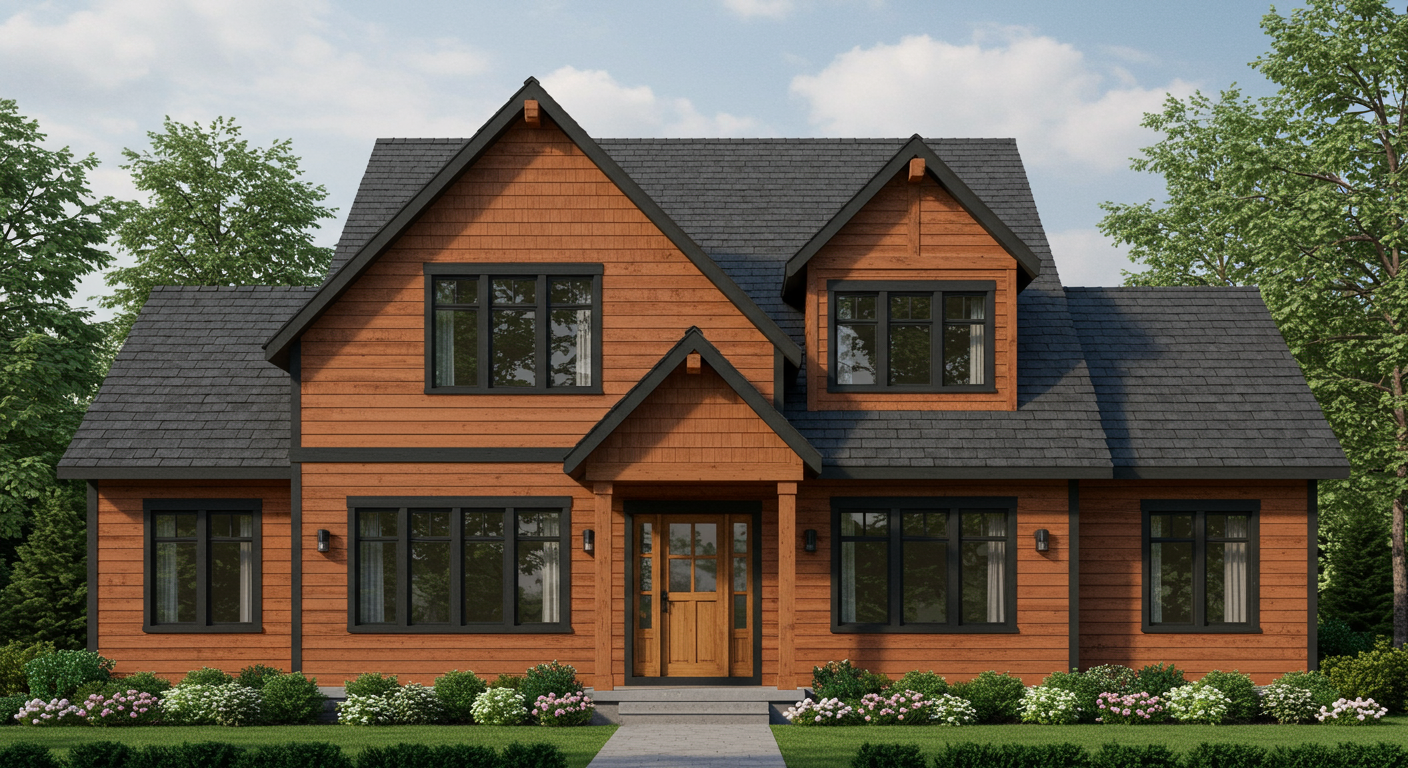
Alexander Rubin
After 10 years of redeveloping and re-imagining, owners Kisha and Jason Itkin have just completed the remake of the last structure in the complex of historic vineyards and buildings that make up their Theorem Vineyards, a picturesque old barn (which inconveniently—or maybe conveniently—fell over in a storm three years ago). Spectacularly located west of Calistoga on Diamond Mountain, the ranch buildings, dating back to the 1880s, now house a collection of tasting nooks, variously nestled in the tank room, the barrel room, that (newly) spectacular old barn, a hillside outlook, and a sweet little marbled and dark-wood tasting room itself, many taking advantage of vistas through clearings in the forested perch north over the valley to Mount St. Helena.
While the “ranch” operations in the Coles’ day were limited to fruit trees and poultry, vineyards were introduced in 1985, and instead of pulling out and replanting, the Itkins have revived the oldest, low-yielding vines, using the block as the base for their top Cabernet Sauvignon, Voir Dire (Jason is an attorney). In the hands of winemaker Kathleen Ward, working with consultant Thomas Rivers Brown, the Theorem 2018 Voir Dire is dark and concentrated, with beautiful high-toned aromas, plush plum and blackberry fruit, deep texture, and acidity that suggests aging potential. The 2019 Moon Mountain District Cabernet, from their vineyard on the Sonoma side of the mountain, where the berries are small and the skins are thick, is structured but elegant, with classic cassis joined by fresh herbs, graphite, and forest notes. On the white side, don’t miss the 2020 Sauvignon Blanc, also from Moon Mountain—fresh but serious—tropicals joining up with grapefruit and mineral notes and fascinating textures (the wine saw time in concrete and neutral oak as well as stainless steel) through an impressive finish. Open by appointment.
While the “ranch” operations in the Coles’ day were limited to fruit trees and poultry, vineyards were introduced in 1985, and instead of pulling out and replanting, the Itkins have revived the oldest, low-yielding vines, using the block as the base for their top Cabernet Sauvignon, Voir Dire (Jason is an attorney). In the hands of winemaker Kathleen Ward, working with consultant Thomas Rivers Brown, the Theorem 2018 Voir Dire is dark and concentrated, with beautiful high-toned aromas, plush plum and blackberry fruit, deep texture, and acidity that suggests aging potential. The 2019 Moon Mountain District Cabernet, from their vineyard on the Sonoma side of the mountain, where the berries are small and the skins are thick, is structured but elegant, with classic cassis joined by fresh herbs, graphite, and forest notes. On the white side, don’t miss the 2020 Sauvignon Blanc, also from Moon Mountain—fresh but serious—tropicals joining up with grapefruit and mineral notes and fascinating textures (the wine saw time in concrete and neutral oak as well as stainless steel) through an impressive finish. Open by appointment.
